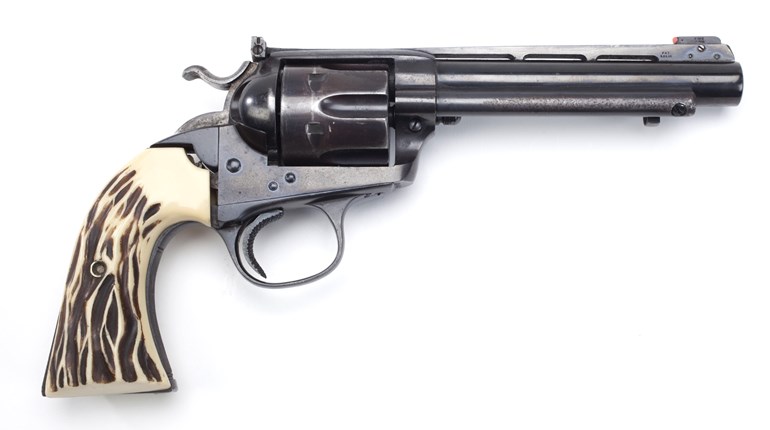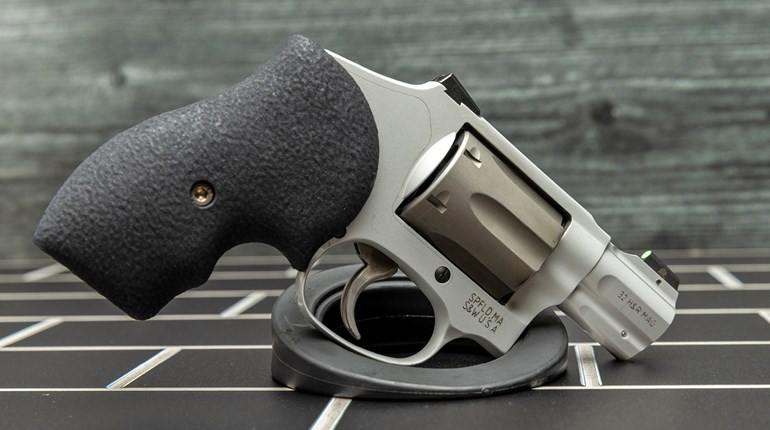
These four .38 Spl. loads from Buffalo Bore are highlighted because they offer good terminal performance out of short barrels.
This year marks the 125th anniversary of the .38 Spl. From the beginning of Prohibition until nearly the close of the 20th century, it was one of the most popular cartridges for law enforcement. When I was hired as a police officer in 1992, I was issued a .357 Mag. revolver, but during training we shot a lot of .38 Spl. ammo that recoiled a helluva lot less. Sheriff Jim Wilson has told me stories of his former Police Chief prohibiting the use of .357 Mag. ammo in their revolvers; .38 Spl. +P was the hottest load they could carry. With many modern shooters, the .38 Spl. does not have the clout it once had, but some of the special .38 Spl. loads of today make the cartridge better than it’s ever been.
Short-barreled .38 Spl. revolvers often need specialty ammunition to deliver optimal terminal performance. This is because velocities with standard-pressure .38 Spl. ammo can fall below the level necessary to initiate reliable bullet upset. Another consideration is the ability to eject empty cases. Short-barrel .357 Mag. revolvers often have short ejectors, and this can complicate the process. Cases for .38 Spl. rounds are about .4-inch shorter, and the ejectors of most compact revolvers will generally do a better job of ejecting them.
Recoil is another consideration. With common defensive loads, .357 Mag. can generate 50- to 100-percent more recoil than +P or standard-pressure .38 Spl. ammunition. My tests have shown that by doubling the free-recoil energy of any handgun, you can expect the time it takes you to complete multi-shot engagements to increase by as much as 20 percent. That could be critical.
Dedicated loads for certain cartridges are what Buffalo Bore specializes in, and these four .38 Spl. loads are a perfect example of the niche the company fills in the marketplace. The .38 Spl. might be 125 years old, but with ammunition like this, it still has a place, whether you’re fighting off a meth-crazed attacker, werewolves or an angry bear. My grandfather kept a Smith & Wesson Model 10 revolver in .38 Spl. on hand. I suspect it was a relic from his moonshining days. I gotta wonder what he’d thought of it if he’d had some of this stuff back in the day.
110-grain Barnes TAC-XP +P #20F
Buffalo Bore offers a +P and a standard version of this load in its Buffalo Barnes line. The standard version is listed at 1,070 fps out of a 3-inch barrel and the +P version at 1,202 fps. I only tested the +P version, and out of my 2.75-inch Korth it averaged 1,140 fps. At that velocity this load develops 317 ft.-lbs. of kinetic energy at the muzzle, which for all practical purposes is identical to many standard-pressure 115-grain 9 mm loads.
I think this load is special for three reasons. First, it will consistently penetrate to about 15 inches, with the frontal diameter of the upset bullet measuring more than .6 inch. This translates to a crush cavity of nearly 5 cubic inches, which exceeds that of many 9 mm loads. Second, recoil was soft, which made shooting comfortable and follow-up shots faster. And finally, it’s loaded with a flash-suppressing gunpowder. This might be one of the best .38 Spl. loads available for ultralight revolvers.
125-grain JHP Standard Pressure, Short Barrel, Low Flash, Heavy #20E
This load was specifically developed due to customer demand and is safe in any .38 Spl. revolver. It’s loaded with a 125-grain, JHP bullet and flash-suppressing powder. It is a standard-pressure load, but it’s more powerful than conventional standard-pressure .38 Spl. ammunition. It has an advertised velocity of 1,019 fps out of a 3-inch barrel, and out of my 33-ounce, 2.75-inch-barrel Korth Carry Special, it averaged 955 fps and recoil was quite comfortable.
In Clear Ballistics, the 125-grain JHP bullet penetrated deeply to a depth of 17.5 inches, and the frontal diameter of the upset bullet measured .45 inch. Buffalo Bore says this bullet will upset/expand with impact velocities as low as 900 fps. This should make it a viable self-defense load even out of revolvers with 2-inch barrels.
125-grain JHP +P Heavy .38 Spl. Low Velocity #20B
Shooters often wonder about the advantage of +P ammunition. This .38 Spl. load utilizes the same bullet as #20E, but it’s loaded to +P pressures. This, of course, equates to a higher muzzle velocity. Advertised velocity out of a 3-inch Ruger SP101 is 1,019 fps, and it exited the barrel of the 2.75-inch Korth at 1,160 fps, 21-percent faster than the standard pressure load. Calculations suggest this load recoils 40-percent more than the standard-pressure 125-grain load, but in terms of felt recoil, the increase seemed less.
The terminal performance of this +P load was very similar to that of the standard-pressure 125-grain load; it penetrated about an inch less in Clear Ballistics, with an upset diameter only .01-inch larger. However, you could see that the added velocity created visibly more damage early on in the wound channel. The noticeable increase in velocity and recoil gives you enhanced tissue destruction and about 47 percent more ft.-lbs. of kinetic energy.
158-grain +P Hardcast Keith Outdoorsman #20H
Hardcast bullets are not lead bullets. Pure-lead bullets have a Brinell hardness of about 4. Due to their antimony content, hardcast bullets can be as much as six to eight times harder. This means they will not deform on impact, which also means they’ll penetrate quite deep. This load passed through 48 inches of Clear Ballistics and had to be stopped with a panel of body armor. Why would you want a load like this? It’s perfect for bear defense or at any other time you need ultra-deep penetration.
Out of my Korth revolver, this load registered at 1,080 fps on the chronograph, which means it is generating about 409 ft.-lbs. of kinetic energy at the muzzle. Advertised velocity out of a 2.5-inch barrel is 1,043 fps and out of a 3-inch barrel it is listed at 1,112 fps. It also delivered the stiffest recoil of the four loads tested.




































